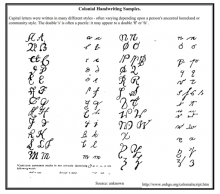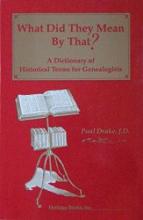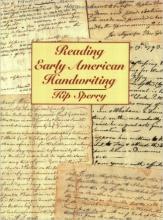It’s easy to forget in this day and age when everything is typed and delivered electronically that handwriting was once considered an art. However, in the Archives we are fortunate enough to possess thousands of records written in longhand.

Early marriage license applications, letters to loved ones and entire court cases are all handwritten. Yet, with as many historical papers as we house, sometimes it is difficult to read, or even understand what the author has written.
Do you know what incunabula means? How about ahnentafel? What in the world is a sugarloaf?

Well, incunabula refers books printed, not handwritten, before the year 1501. An ahnentafel is a type of ancestry chart and a sugarloaf refers to refined sugar formed in cubes sold in the late nineteenth century. Without the aid of reference materials modern researchers would have a difficult time deciphering early American cursive and understanding the slang terms used in earlier eras. In the Champaign County Historical Archives we have several reference books to aid with your research. A few include:
Understanding Colonial Handwriting by Harriet Stryker-Rodda
Reading Early American Handwriting by Kip Sperry
If I Can, You Can Decipher Germanic Records by Edna M. Bentz
What Did They Mean By That? : A Dictionary of Historical Terms for Genealogists by Paul Drake
Heraldic Designs and Engravings: A Handbook and Dictionary of Heraldic Terms by J. M. Bergling

So, if you can’t read what that 1897 marriage record says, or have trouble understanding the letter written by your great-great aunt, the flapper, in 1922, please come into the Archives.
Lara, Archives Assistant
